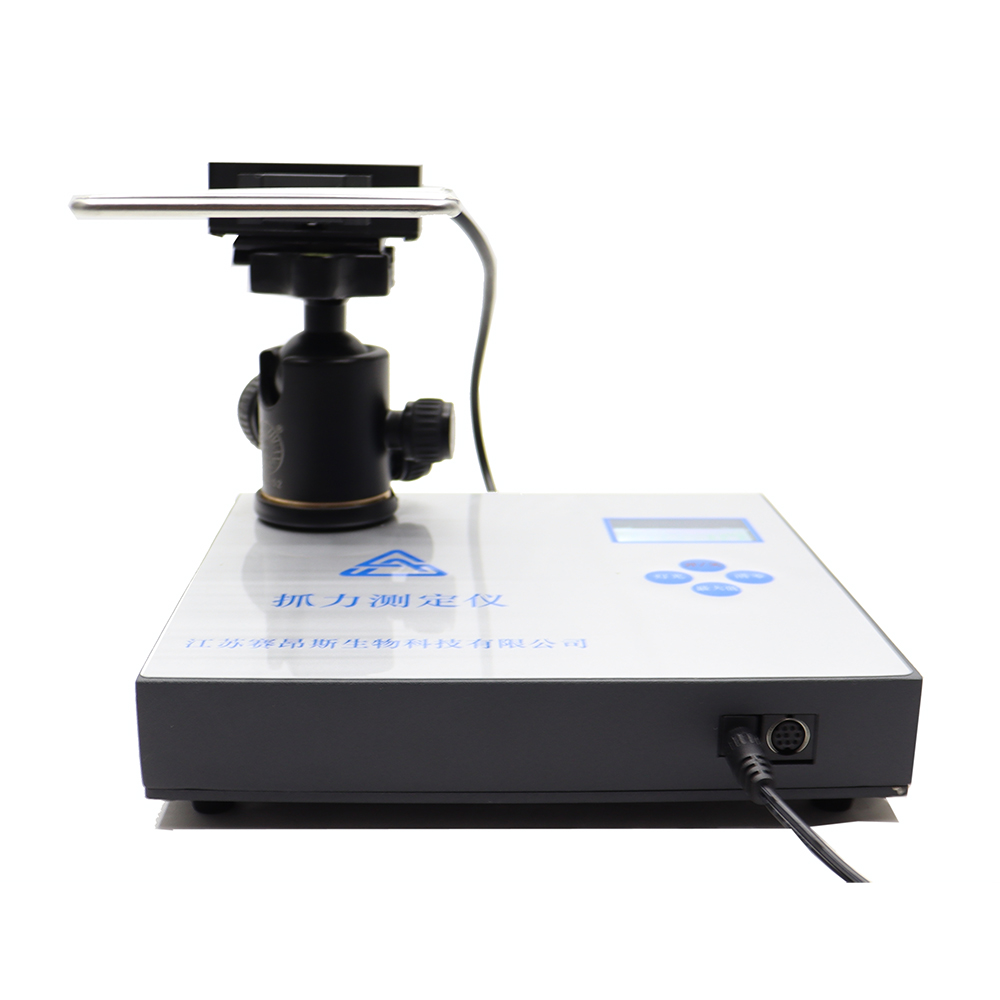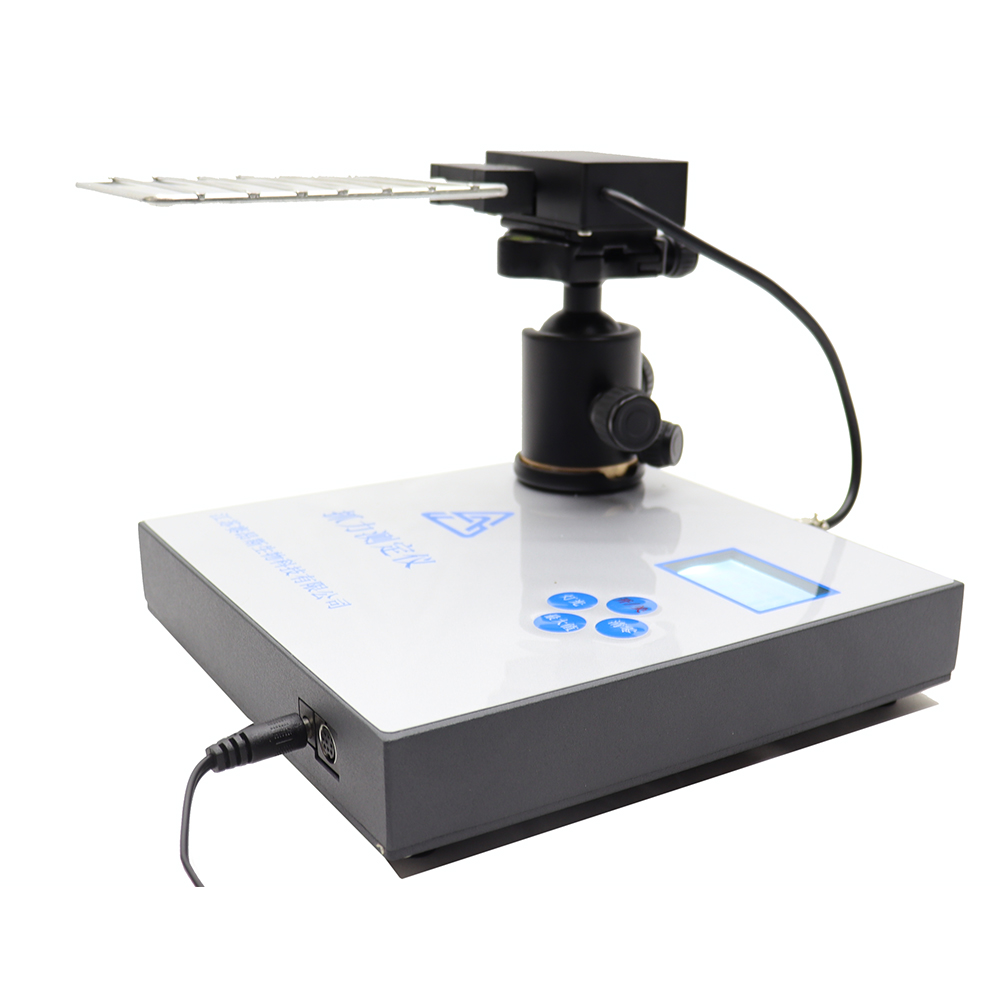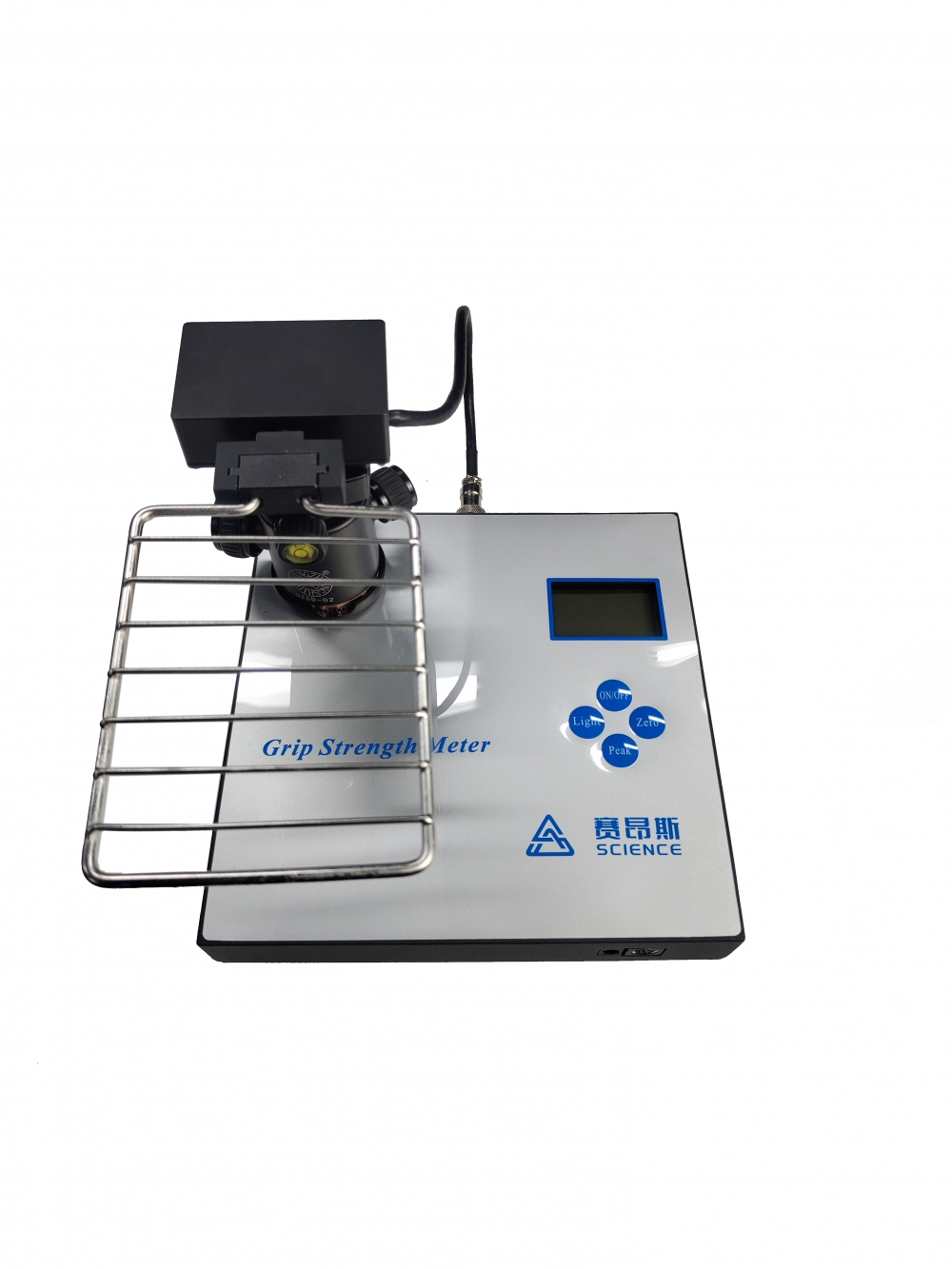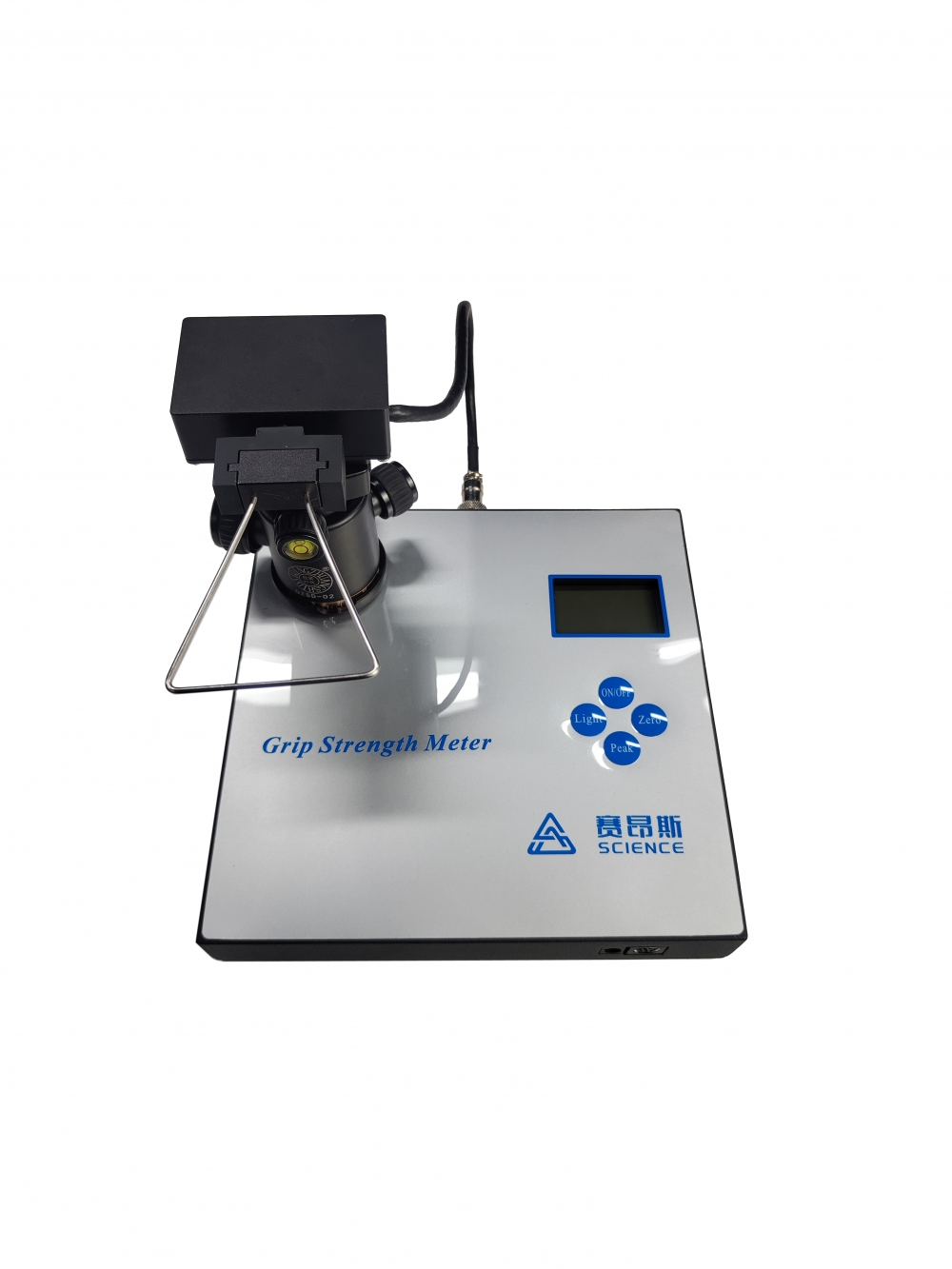Technical Parameters
• It includes 6 Grip plate suitable for forelimb grip strength test or hind limb grip strength test for Rat and Mouse.
• Maximum tensile force Range: 0 – 50 N (5kgf)
• High resolution: 0.01N
• Peak force remains until manual zeroing
• Multi-units display: Kgs, grams, LBs Newton
• Inductive backlight, turn on/off can be set easily
• Via USB cable to connect to PC
• Data can be visualized on the control unit display or exported to a PC, then achieve the detailed analysis
• Easy data transfer into TXT, Excel-compatible files
• Multifunction curve graphic display in JPG format, easily for paper publication
• Power adaptor (100-240 V) or battery included for use 20 hours
• Overall dimension: 280X120X100mm
• Grip mesh size: 90x90mm
• Net weight: 2kg
• Power Input: 110~220V 50hz
• Power Output: 9V 400mA
Ordering Information
| Item No. | Product |
| SA415 | Grip Strength Meter for both Rat and Mouse |
Reference
1. Prim-O-glucosylcimifugin ameliorates aging-impaired endogenous tendon regeneration by rejuvenating senescent tendon stem/progenitor cells
https://www.nature.com/articles/s41413-023-00288-3
2. The gender-specific adverse association of polycyclic aromatic hydrocarbons on skeletal muscle mass and strength in the general adults and the possible mechanisms in experimental rats
https://www.sciencedirect.com/science/article/abs/pii/S0045653521025388
3. Dysfunction of Akt/FoxO3a/Atg7 regulatory loop magnifies obesity-regulated muscular mass decline
https://www.sciencedirect.com/science/article/pii/S2212877824000231








